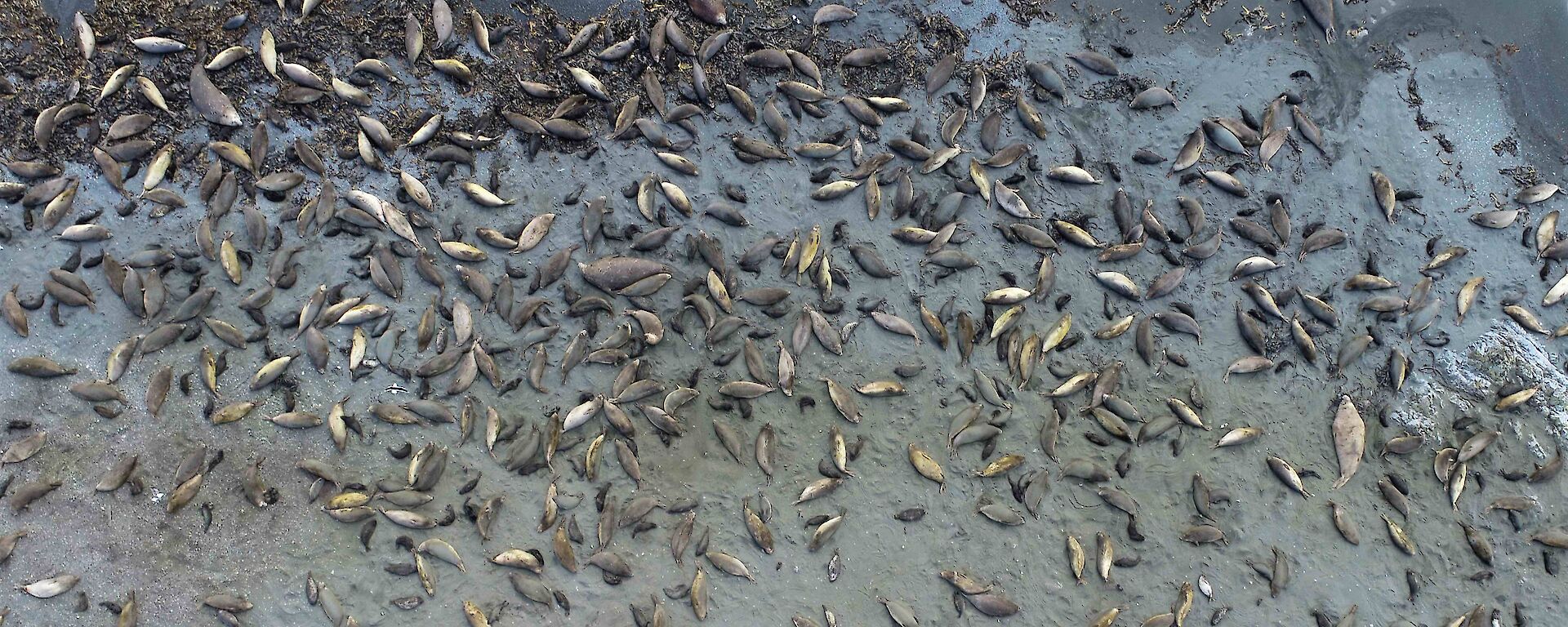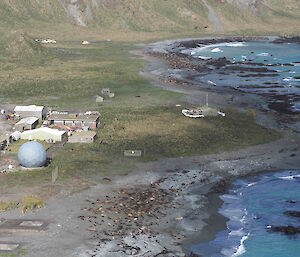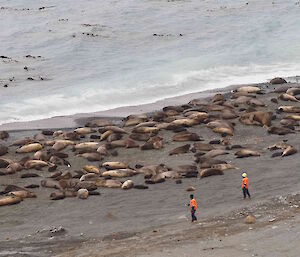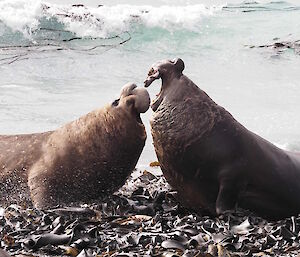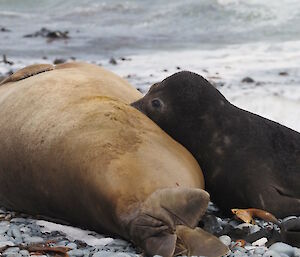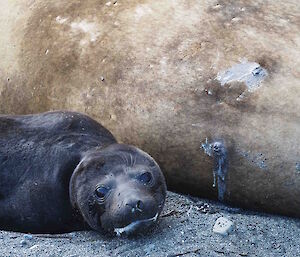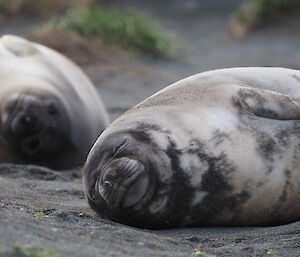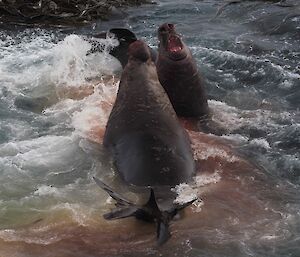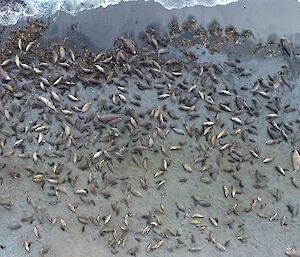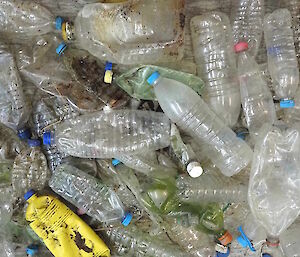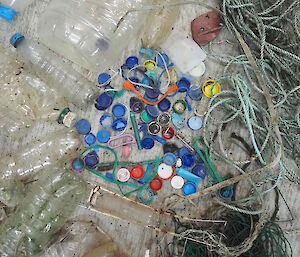Over two and a half thousand southern elephant seals (Mirounga leonina), the largest seal species in the world, have taken up temporary residence again on Macquarie Island’s isthmus beaches – our station ‘backyard’ is a very important breeding habitat for this threatened species.
There is a lot of commotion. The females (cows) have gathered in groups called harems with their black furry pups. The much larger dominant males (known as bulls or beachmasters) are busy defending their harems from challengers. The older pups have quickly transformed into plump sleepy weaners and are dispersing – we are starting to find them all around the station.
One harem of over 200 cows is less than 50 metres from station infrastructure (the ‘ANARESAT’ antenna radome)! Most of us can hear noises from the harems from our bedrooms, including lots of growling and snorting. It is a privilege to be living so close to these enormous extraordinary creatures.
This year’s Macquarie Island temporary human residents have been helping the rangers with lots of elephant seal counting as part of long-term monitoring. It can be quite a challenge – the largest harem near the station had over 600 cows this year and is probably the biggest harem on the island. At the peak of the seal numbers, it can take over four hours each day to count all of the isthmus elephant seals, which is usually shared between two pairs of counters. This year we’re also comparing the traditional counting method to abundance estimates derived from aerial imagery.
Additional elephant seal counts along other sections of coastline are undertaken each year on 15 October. It doubles as an opportunity to pick up rubbish that has washed up, though our backpacks get heavy quickly – sadly, there is a lot of rubbish! This year we found the usual plastic bottles, bottle lids, ropes and fishing gear, as well as a toothbrush! Some of the fishing gear and the rusty metal barrels are too big or heavy and will need to be fetched another time.
Southern elephant seals are a threatened species that are protected under Tasmanian and Australian legislation (listed as vulnerable). Annual monitoring has shown the island’s population is experiencing a slow decline. Although it is difficult to understand the reasons for the population decline, it is likely that the foraging habitat of the population is being impacted by changes to Antarctic sea ice extent due to climate change.
Andrea and Jarrod (Tasmania Parks and Wildlife Service rangers)

